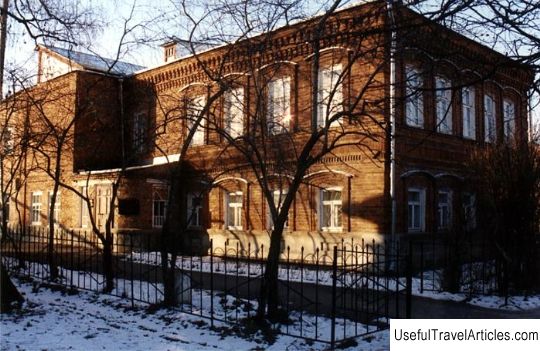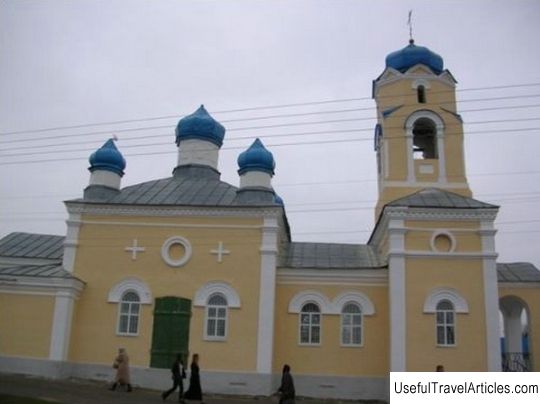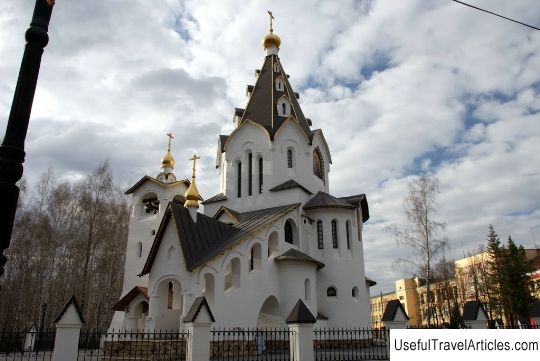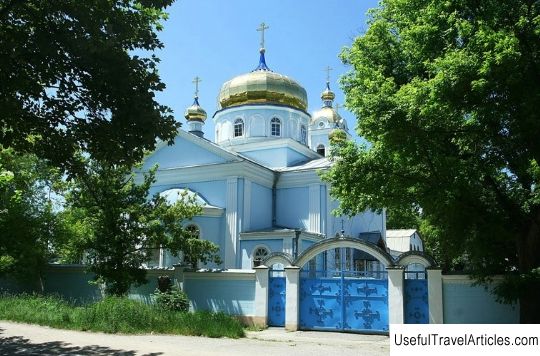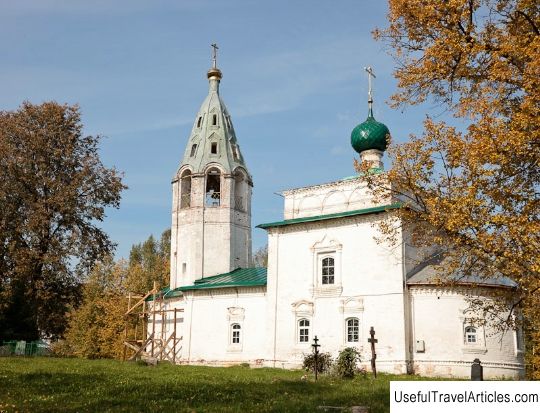Holy Cross Church description and photos - Russia - Golden Ring: Palekh
Rating: 7,5/10 (100 votes) 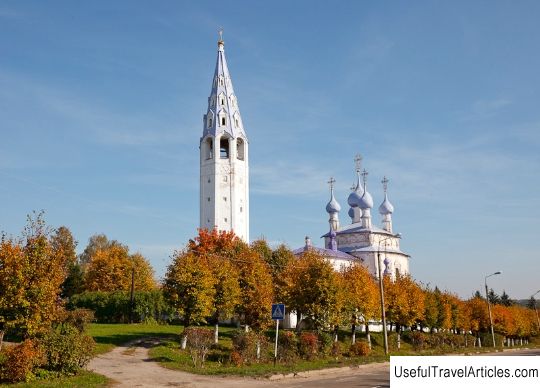
Holy Cross Church description and photos - Russia - Golden Ring: Palekh. Detailed information about the attraction. Description, photos and a map showing the nearest significant objects. Photo and descriptionThe Church of the Exaltation of the Cross was built in the city of Palekh between 1762 and 1764 according to the project developed by the architect E. Dubov. The temple was built in the forms of ancient ancient Russian architecture of the 17th century, but still especially close to the Naryshkin baroque style. As you know, since ancient times Palekh was the largest center of Russian icon painting within the framework of the old Russian tradition. Initially, a wooden church was built in the city in honor of the Exaltation of the Cross, but after a while, Nikolsky and Kazan side-chapels appeared here. After some time, a stone church that exists to this day was built. For a certain period of time, the exposition "Old Palekh" operated in the building, while the cathedral was part of the museum, dedicated to Palekh art, which was opened in the spring of 1935. It is known that in 1922 the Church of the Exaltation of the Cross was transferred to the Ivanovo diocese and became a component of the Nikolo-Shartomsky monastery. The building of the cathedral was erected from bricks, after which it was whitewashed by coating. The main volume is a large two-story quadrangle, which is covered with a closed vault and is equipped with an attic zone or a deaf low tier, somewhat separated from the main volume by a cornice. Today the temple has a four-pitched roof overlap. The completion of the composition of the main volume is represented by the traditional five-chapter. On the east side, there is a three-lobed rounded apse, equipped with a cone-shaped roof. On the west side, this composition continues with the refectory, which is covered with a box vault with stripping, and above the main nave there is a small opening in the upper aisle - you can get into it by walking along a spiral cast-iron staircase. From north to south, aisles adjoin the refectory room, the completion of which is made as rounded apses. The side and upper aisles end with a miniature dome. On the western side, the refectory is connected with the bell tower, which has the traditional composition "octagon on a quadruple", completed with a tent cut through by several rows of rumor windows. Initially, the bell tower stood separately from the church, but after a while, the two-pillar refectory room was extended from the west side and became a four-pillar one. The general building of the Exaltation of the Cross Church was placed on a high base, which ends with a narrow curb belt. The main volumes are completed with a wide frieze with a multi-row saw. The corners of the refectory and the quadrangle are emphasized by tufts of columns, while the single columns are highlighted by the articulation of the altar petals. Window openings are framed by platbands with beautiful three-bladed ends with a median keeled component. In the upper refectory aisle, the window openings are small in size, with aprons and ears and are made in Baroque style. The attic tier is decorated with semicircular kokoshniks resting on small stepped consoles. The drums are decorated with thin columns above the main volume. In the decorative design of the bell tower there are corner blades, as well as a wide belt with a brick laid out in the form of a diamond under the most tiered ringing. On all sides of the pillar, there are deep niches in several tiers, equipped with tiles. Besides, the plastic solution is complemented with the help of keeled archivolts. As for the interior decoration, there are a large number of murals that were made from 1807 to 1812 by monumental artists from Palekh and Moscow. Among the masters, it is worth highlighting the Sapozhnikov brothers, as well as the painters Vecherin and Belyaev. In terms of decorations, the techniques of monumental Old Russian painting are used, combining elements of baroque and classicism. At the end of the 19th century, the painting was almost entirely written in oil paints and underwent a large number of restorations and renovations. The colorful design of the interior decoration is rather restrained. The main temple iconostasis is stylized in the Baroque style and was made by the Belousov brothers at the beginning of the 20th century.         We also recommend reading Ancient Argos (Argos) description and photos - Greece: Argos Topic: Holy Cross Church description and photos - Russia - Golden Ring: Palekh. |
